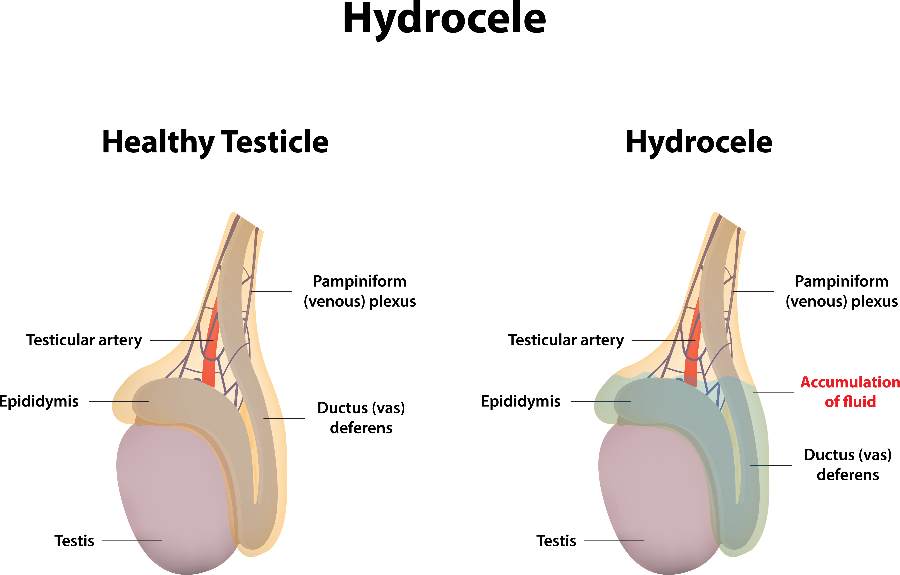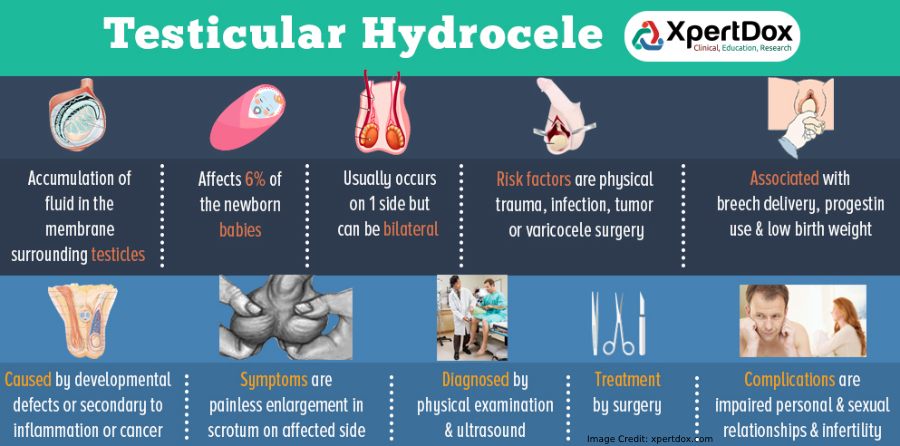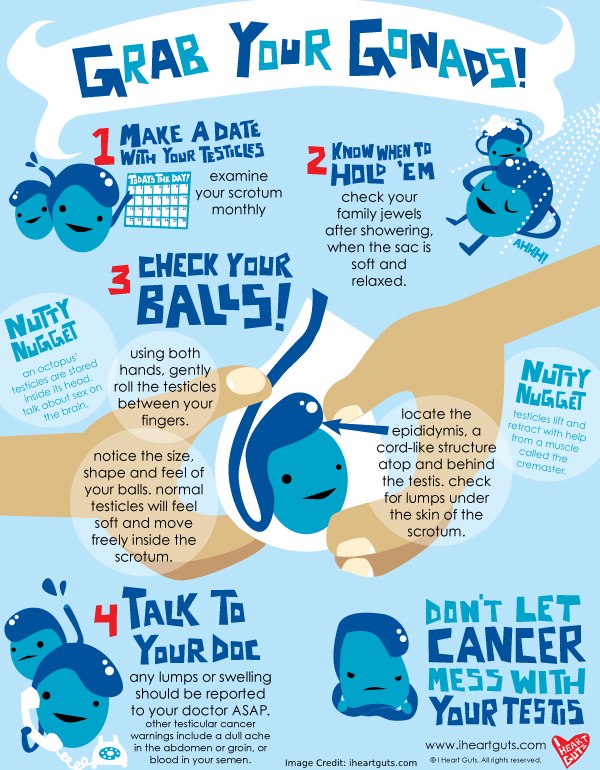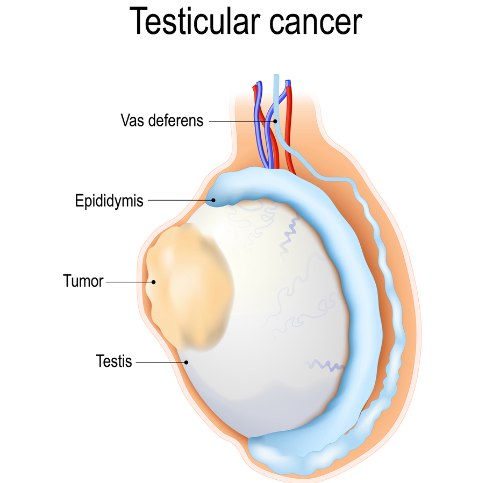The male reproductive system is not only complex, but also precious. Without this particular system present and functioning in the male body, reproduction would not be possible.
Unfortunately, there are a great number of conditions that can adversely affect the many different parts that make up the male reproductive system, including the penis, the testicles, the prostate and all the other connected parts.
People also ask
From cancer to sexual dysfunctions, it is important for men to be educated about different conditions that may affect their genitals and to know about particular symptoms they should consider a call for concern.
Not all of the conditions that can affect the male genitalia are harmful or affects fertility in a negative way, however.
In this article, we want to focus on a condition that is relatively common, especially amongst newborns, yet often undiscussed due to the majority of articles describing issues with the male sex organs focusing on erectile dysfunction, infertility and similar conditions.
The condition we are focusing on in this article is known as hydrocele – in men, the condition is also called testicular hydrocele. We are going to start by looking at how this condition affects men versus women, take a closer look at what exactly testicular hydrocele means, the symptoms it may cause, why it happens, how a doctor can diagnose the condition and how it can be treated.
We will also consider some health concerns that can produce similar characteristics as hydrocele, and consider when a man should seek medical attention to have such symptoms examined by a healthcare professional.
What Is Hydrocele?
Hydrocele is a term that refers to fluid that accumulates within a sac, which often surrounds a certain part of the genital region within the human body. The condition is often associated with newborn babies, but can become present in a person of any age.
When discussed in plural form, the condition is referred to as hydroceles – this can be the case when more than one sacs of fluid have developed; thus affecting both sides of the particular area that is targeted by the condition in the human body.
What Is Testicular Hydrocele?

When a man develops a hydrocele, it is called testicular hydrocele. In men, the clear fluid collects in a sac that surrounds the testicles. In many cases, only one testicle will be affected in a man.
There are, however, cases where both testicles can be affected; thus a hydrocele may be present and surrounding each of the testicles.
When only one testicle is affected, the condition is called unilateral testicular hydrocele. When a fluid-filled sac has developed around both testicles, the condition is then referred to as bilateral testicular hydrocele.
Hydroceles In Men Versus Women
It is widely known in the medical profession that hydroceles mostly affect men, with up to 10% of male newborn babies being born with a hydrocele, affecting either one or both sides of their scrotum and testicles.
In women, hydroceles can also develop, but this condition is much rarer than amongst men; thus when reading about hydroceles, most information would often tend to focus on the condition being present in men; thus the reason for also identifying the condition as testicular hydroceles.
Should a hydrocele develop in the female body, it would develop in their labia majora. The labia majora is the larger labial structure found in their reproductive system and also the outermost labial structure.
The Symptoms of Testicular Hydrocele
It is often difficult to identify the presence of a hydrocele in the scrotum, since it does not always cause a significant amount of symptoms or any symptoms that men would be automatically concerned about.
Inflammation, which can be very mild when the hydrocele is only starting to form, is often the first symptom to be experienced.
Additionally, the inflammation may also cause the scrotum to become heavy, according to Mayo Clinic [1], which may lead to discomfort and sometimes also pain. Inflammation can increase as the sac grows larger due to more fluids being collected.
The Characteristics of Testicular Hydrocele
As we have noted, the most common symptom or characteristic of testicular hydrocele is inflammation in the scrotum. The inflammation may be noticed in one testicle or in both testicles, depending on whether the condition is affecting a single testicle or both.
Another important characteristic of testicular hydrocele to take notice of is the fact that a lot of patients find that the inflammation they experience in the affected testicle (or testicles) tend to be milder after waking up in the morning, but then starts to grow larger as the day progresses.
The Epidemiology of Testicular Hydrocele
A testicular hydrocele is certainly not the most common type of health concern that affects the male reproductive organs in adults, but the condition is quite common amongst newborn babies and younger boys.
According to Medscape [2], amongst adult men, approximately 1% will ever develop a hydrocele that affects either one or both testicles. In newborn boys, however, as much as 80% may experience the condition to some degree – in most cases, however, the hydroceles clear up without any medical intervention by the time they are 18 months old.
They also note that the prevalence of testicular hydrocele in infant boys are increasing – this is mostly due to the increased number of premature infants that are able to survive in the modern day, thanks to the latest advancements in medical care.
Furthermore, they also report that the majority of testicular hydrocele diagnosis occurs in children between the ages of one and two years, and the most common kind of testicular hydrocele is congenital, also called a non-communicating hydrocele.
Note that there is also an increased risk of developing this condition amongst men aged 40 years and older – in such a chase, a chronic hydrocele is usually suspected. Globally, over 30 million men (this includes both adult men and younger boys) are affected by testicular hydrocele.

The Two Types of Testicular Hydrocele
Testicular hydrocele can be divided into two different types [3]. Understanding how the condition occurs is essential for understanding the two different types of testicular hydrocele. It is also important to note that in infants and adults, the development of testicular hydrocele occurs differently.
We will discuss the causes of the condition later on, but for now, it is important to note that the condition develops when clear fluids from the abdominal cavity leaks into the scrotum; thus causing a sac of fluid to develop surrounding the testicles.
Communicating Testicular Hydrocele
This is the less common type of testicular hydrocele. With communicating testicular hydrocele, the cavity in the abdominal region where fluid has leaked from has not closed up properly; thus fluids may still continue to leak into the testicular area; thus causing a fluid buildup and the development of hydrocele.
With continued fluid buildup, the hydrocele may also start to grow bigger; thus leading to more discomfort, possibly more pain and also a more significant amount of inflammation. This type of testicular hydrocele is considered more serious due to the continuous drainage of fluid from the abdominal cavity toward the scrotum and testicles.
Non-Communicating Testicular Hydrocele
Non-communicating testicular hydrocele, also sometimes called simple hydrocele, is a condition where fluid has drained from the abdominal cavity toward the scrotal region; thus causing a buildup of fluids contained in a sac to accumulate around the testicles.
Unlike communicating testicular hydrocele, however, with this particular type of the condition, the cavity closed up after fluid drained into the scrotal region; thus, preventing further drainage.
When this condition develops, it means fluid that drained while the cavity was open did not dry up properly; thus caused a buildup.
The Causes of Testicular Hydrocele
There are different factors that are considered potential causes for the development of testicular hydrocele [4]. To consider potential causes for a particular individual, however, certain aspects need to be taken into consideration before an accurate finding can be made.
Age is one of the most important aspect that should be considered when determining a possible cause for the development of the condition.
The cause of testicular hydrocele is usually quite obvious when the condition is detected and diagnosed in an infant or very young boy. During pregnancy, a male baby’s testicles are found within a particular part of his abdomen.
At the final parts of pregnancy, however, the testicles will descend out of his abdominal area and into the sac we all know as the scrotum. The scrotum was designed to hold the boy’s testicles in place and to protect them from outside exposure.
The testes of the unborn baby are each surrounded by a sac of clear fluids. As the tested drop into the scrotum, these sacs tend to close on their own and the fluid that is found within the sac dries up – most often within one year following the birth of the baby.
Unfortunately for some, the fluid found in these sacs may drain into the scrotum as the testes descend from the abdominal cavity they are stored in. This can cause the development of a hydrocele. In some cases, the sac may still close even after draining into the scrotum; thus causing no additional problems.
There are, however, cases where the sac fails to close and continues draining floods into the scrotum, causing the hydrocele to collect more fluid over time; thus, also leading to further inflammation and symptoms.
When an adult man develops testicular hydrocele, the cause is often undiscovered by a medical professional as it can be somewhat difficult to determine the particular cause if not additional symptoms or conditions are experienced that might have contributed to the buildup of fluids in the patient’s scrotum.
In some cases, the cavity in the abdomen where the testes descended from prior to birth never closed up; thus causing fluids to be drained into the scrotum through this cavity later in life.
There have also been cases where the cavity did close during infancy, but then later on opened up again and caused a drainage of fluids into the patient’s scrotum.
The cavity where the testes used to lie prior to birth is not the only cause for testicular hydrocele in adult men. If a man has underwent surgery or obtained injury to one or both of their testicles, then these may also be factors that contribute to a higher possibility of a hydrocele forming in their scrotum.
Inflammation of the testicles has also been linked to this particular condition. In certain cases, the development of an infection in a testicle can also contribute to the buildup of fluids within the patient’s scrotum.
There have also been very rare cases where a hydrocele develops in a male patient’s scrotum when they have been diagnosed with testicular cancer. Cancer that affects the left kidney has also been shown to rarely contribute to the development of this particular condition.
Who Are At A Higher Risk Of Developing Testicular Hydrocele?

Knowing the risk factors associated with testicular hydrocele can help a patient determine if they are more likely to have developed this condition should inflammation, discomfort, pain and other associated symptoms be experienced in their testicles. It is relatively easy to determine the risk factors for this particular condition by simply looking at the prevalence.
As we have noted, the condition is most commonly diagnosed in infants, as well as younger boys. In addition to younger boys, testicular hydrocele also seems to be relatively common amongst men who are older than 40 years of age.
Additionally, men who have obtained an injury to their scrotum in the past are also more likely to develop testicular hydrocele. There also seems to be a connection between infections in the testicles, as well as certain sexually transmitted infections.
Diagnosis Of Testicular Hydrocele
Even though this condition does not pose an immediate threat and often goes away without any medical treatment, it is still important to obtain an examination from a healthcare professional since testicular hydrocele can cause complications in some cases, and the cause of the symptoms experienced may be due to a more serious medical condition.
A physical examination is the first step to being diagnosed with testicular hydrocele. A healthcare professional will inspect the affected testicle of the patient physically to identify whether this particular condition is suspected, or if another medical condition might be to blame for the symptoms the patient is experiencing.
During the physical examination, a transillumination test may also be performed. This involves using an otoscope to place a light source on the part of the scrotum that is inflamed. This will help the healthcare professional compare the swollen part to the part that is not swollen.
In some cases, a healthcare professional may also request an ultrasound test. This will help to better analyze the problem and determine whether any additional factors may be to blame for the development of testicular hydrocele.
Furthermore, in cases where complications are suspected, surgery may be required to make an official diagnosis.
How Testicular Hydrocele Is Treated?
If the testicular hydrocele is found in a newborn baby, a healthcare professional will usually not advise on any medical procedures to treat the condition.
These cases usually resolve on their own prior to the first birthday – sometimes it may take a little longer. Should the problem persist, however, then surgical correction of the hydrocele may be advised?
When the condition develops in an adult, the treatment methods provided to the patient may be different from an infant.
There are no medical approaches to treating testicular hydrocele due to the location and characteristics of the condition. In most cases, a surgical approach is utilized to correct the problem and remove the developed hydrocele.
Medscape reports [5] that there are three different types of surgery that can be used to remove a testicular hydrocele in adult patients. These surgical approaches include inguinal surgery, sclerotherapy and scrotal surgery.
The particular type of surgery used for a patient will depend on the severity of their condition – how much swelling is present, how much fluid has been drained into the scrotum and whether or not the abdominal cavity is still draining fluids. The location of the hydrocele may also affect the particular type of surgery used.

Conditions That May Cause Similar Symptoms as Testicular Hydrocele In Men
Testicular hydrocele is often harmless and can clear up without any invasive medical intervention over time; thus meaning that this condition is not necessarily a call for concern. This particular condition, however, is not the only condition or disease that can affect the testicles.
With inflammation being one of the primary characteristics of testicular hydrocele, men should not necessarily assume that this condition may be present when inflammation does occur – and consider their condition harmless and not a need for medical intervention.
Most conditions and diseases that affect the testicles tend to cause inflammation as a symptom, in addition to pain and discomfort – similar to the symptoms that men experience when they have a hydrocele in one or both of their testicles.
For this reason, it is always important to see a doctor should swelling, pain, tenderness or discomfort be experienced in the testicles.
This may not only detect a more serious consequence of testicular hydrocele but may also indicate the possibility of another potentially more harmful health condition affecting the patient’s testicles – and early diagnosis of such a disease is vital for the success of their treatment.
eMedicine Health reports that many other conditions may cause pain and inflammation in the testicles – some of which should be considered as medical emergencies. These might include:
- Testicular torsion, a condition where the testicles become twisted within the patient’s scrotum. With this condition, blood supply to the affected testicle is cut off. When blood supply is cut off from the testicle, the testicle will not gain access to an adequate supply of oxygen to survive. In turn, this can cause the testicle to stop functioning and die. In most cases, testicular torsion is found amongst men with abnormalities with the testicle’s attachment to the scrotum’s wall. This condition is usually found in newborn babies, as well as in teenage boys between the ages of 12 and 18.
- Inguinal Hernia, a condition that is less common that many of the other testicular conditions, but can also lead to discomfort of the testicles and inflammation within the scrotum. An inguinal hernia occurs when a muscular defect in a patient’s groin region causes part of the intestine to slide into the patient’s scrotum.
- Epididymitis, a condition that usually occurs when an infection develops in a patient’s testicle, can also cause symptoms such as inflammation, pain and discomfort. In some cases, epididymitis is caused by abnormalities found in the patient’s genitourinary system. An enlarged prostate also causes epididymitis in older men. Note that the most common cause of epididymitis is usually Chlamydia, Gonorrhea or another type of sexually transmitted disease.
- Orchitis is another condition that may present similar symptoms. This condition refers to testicular inflammation and is often found in men who also have developed epididymitis.

- A testicular tumor has also been shown to cause similar symptoms, such as inflammation. Similar to a testicular hydrocele, testicular tumors also often leads to inflammation without any significant pain, especially at an early stage.
Thus, when inflammation does occur, a patient should examine their testicles and feel if any lumps can be found on the testicle affected by inflammation, discomfort or other particular symptoms.
Read More: Study Says – Testosterone Levels Start Declining After Being Father
Conclusion
Men need to be aware of particular conditions that can affect the different parts of their reproductive organs. Even the lesser-known conditions, such as testicular hydrocele, which we discussed in detail here, is an important condition to be educated about.
Detecting the signs of such a condition can help men overcome the condition easier since early detection of problems with the male reproductive organs may often lead to a more successful and less invasive treatment.
In addition to testicular hydrocele, men should know that various other conditions and diseases can affect their testicles; thus close monitoring of the testicles should be practices when discomfort, inflammation and pain in experienced in this part of their body. If you are looking for a male product to enhance the performance, then you might take the help of GNC Mega Men Performance & Vitality.
Feature Image: Shutterstock.com
In-Post Image: Shutterstock.com, www.xpertdox.com & iheartguts.com









 This article changed my life!
This article changed my life! This article was informative.
This article was informative. I have a medical question.
I have a medical question.
 This article contains incorrect information.
This article contains incorrect information. This article doesn’t have the information I’m looking for.
This article doesn’t have the information I’m looking for.